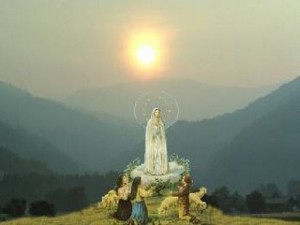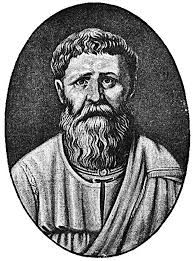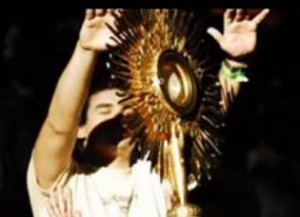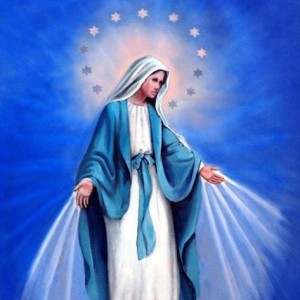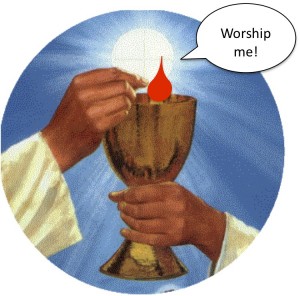
[This is the second installment of a three part series.]
As we have elsewhere noted, the Roman Catholic religion teaches that the bread of the Lord’s Supper literally becomes the body, blood, soul and divinity of Jesus Christ, and therefore must be worshiped. The worship of the bread, the Eucharist, is the highest form of worship a man may offer to God. Therefore, the Roman Mass is the highest form of worship, and the moment when the bread is transubstantiated into “Jesus” is the highest point in the Mass. The “True Presence” of Christ in the Eucharist is what makes Eucharistic Adoration obligatory, and Eucharistic Adoration, therefore, is the chief objective of Roman religion. Roman Catholics worship the Eucharist. Everything else in the religion is merely prologue to the act of adoring the bread. That is not to say that every Roman Catholic has been persuaded of this doctrine on its merits. Sometimes a miracle—a Eucharistic Miracle—is required to reinforce the practice. Continue reading If This Bread Could Talk
 Follow
Follow